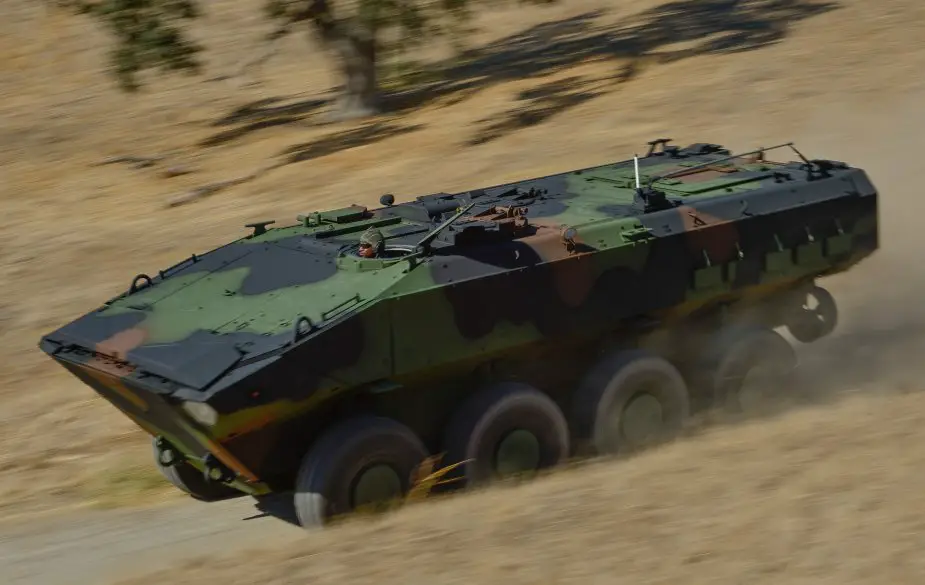Breaking news
USMC AAV7 Assault Amphibious Vehicle survivability upgrade program terminated.
The U.S. Marine Corps is terminating its Assault Amphibious Vehicle (AAV7) survivability upgrade program, InsideDefense reports. It will instead acquire a larger fleet of new Amphibious Combat Vehicles. Marine Corps spokesman Manny Pachecho said the decision stems from a renewed focus on modernization in support of the National Defense Strategy, according to InsideDefense.com. The service issued a 90-day partial stop work order to Science Applications International Corp, but SAIC said they will still delivery four vehicles over the 90-day period.

BAE Systems teamed with Iveco with a version of the Italian SuperAV, and beat out a version of the Terrex 2 offered by SAIC/ST Kinetics (Picture source: US Naval Institute)
The survivability upgrade was intended to keep a portion of the AAV7 fleet operational through at least 2035 to serve alongside the new ACV. SAIC was selected in March 2015 to build 10 prototypes for the survivability upgrade under a $53 million contract. Additional options would lead to testing and LRIP of 52 vehicles for operational test and evaluation. The Marines were planning to put the prototypes through their paces before approving full-rate production of 392 upgraded vehicles (out of a fleet of around 1,000 vehicles). The Marine Corps requested $156.2 million for AAV7 work in FY19, with $814.2 million programmed through FY23.
The program's termination will result in the procurement of additional ACVs. BAE Systems won the ACV Increment 1.1 competition in June, and the company was awarded a $198 million contract to provide 30 low-rate initial production vehicles. The contract includes options for 204 ACVs over four years, worth $1.2 billion. Deliveries are scheduled to begin in fall 2019. The Marines funded another 30 vehicles in FY19, and plans to procure 52 vehicles in FY20 and 96 in FY21.
The ACV program's second phase, Increment 1.2, called for the delivery of up to 490 additional vehicles featuring various mission variants (command and control, logistics, recovery, and possibly turreted). The Marines will develop a revamped procurement target in the wake of the AAV7 termination. Increment 1.1 vehicles were expected to feature basic shore-to-shore swim capabilities to cross rivers and small bodies of water, while Increment 1.2 vehicles would add improved swim capabilities, enabling ship-to-shore travel. Both industry teams met Increment 1.2 swim capabilities with their Increment 1.1 offerings. Increment 1.2 vehicles will also feature additional weapons.
BAE Systems teamed with Iveco with a version of the Italian SuperAV, and beat out a version of the Terrex 2 offered by SAIC/ST Kinetics. Both teams were originally awarded EMD contracts in November 2015 to provide 16 prototypes each for testing.
The existing AAV7 can carry 25 combat-ready Marines, but the ACV sacrifices troop capacity for increased survivability and mobility. The SuperAV has a capacity of 13 Marines and three crew members, enough to carry a full 12-man rifle squad (the Marines recently announced a move from a 13-man squad to a 12-man squad).





























